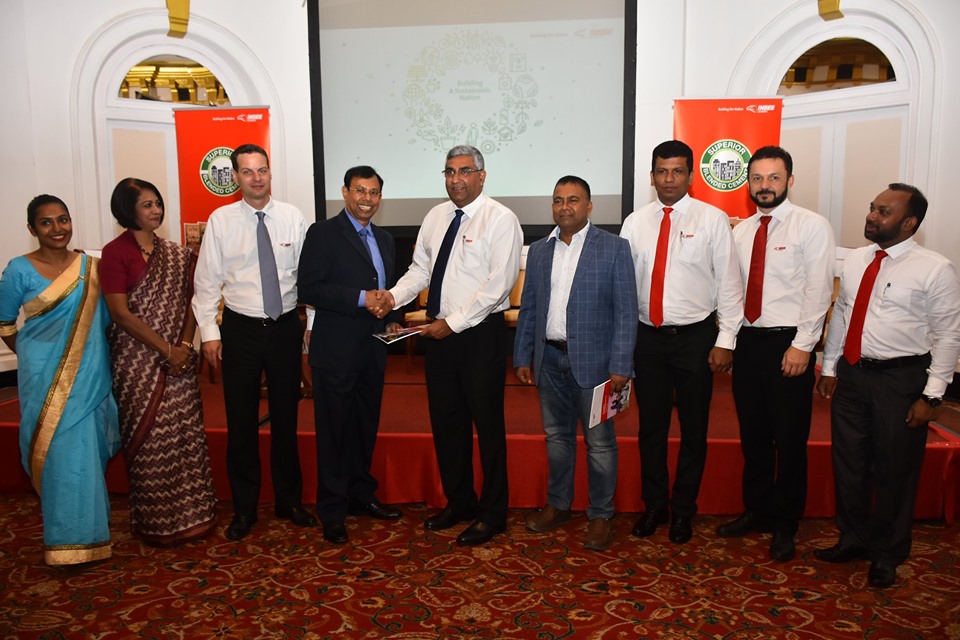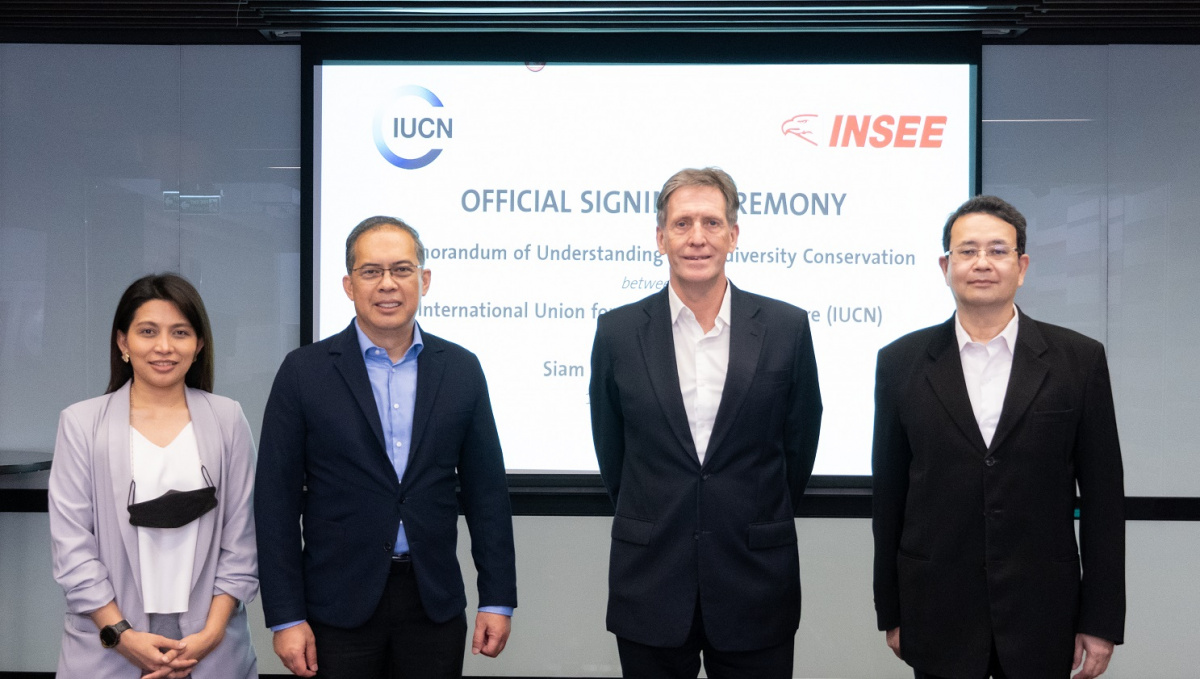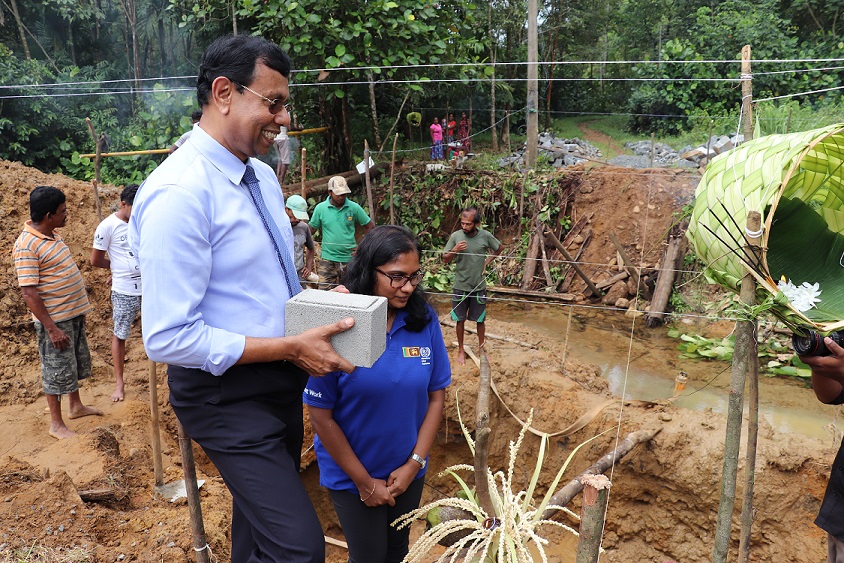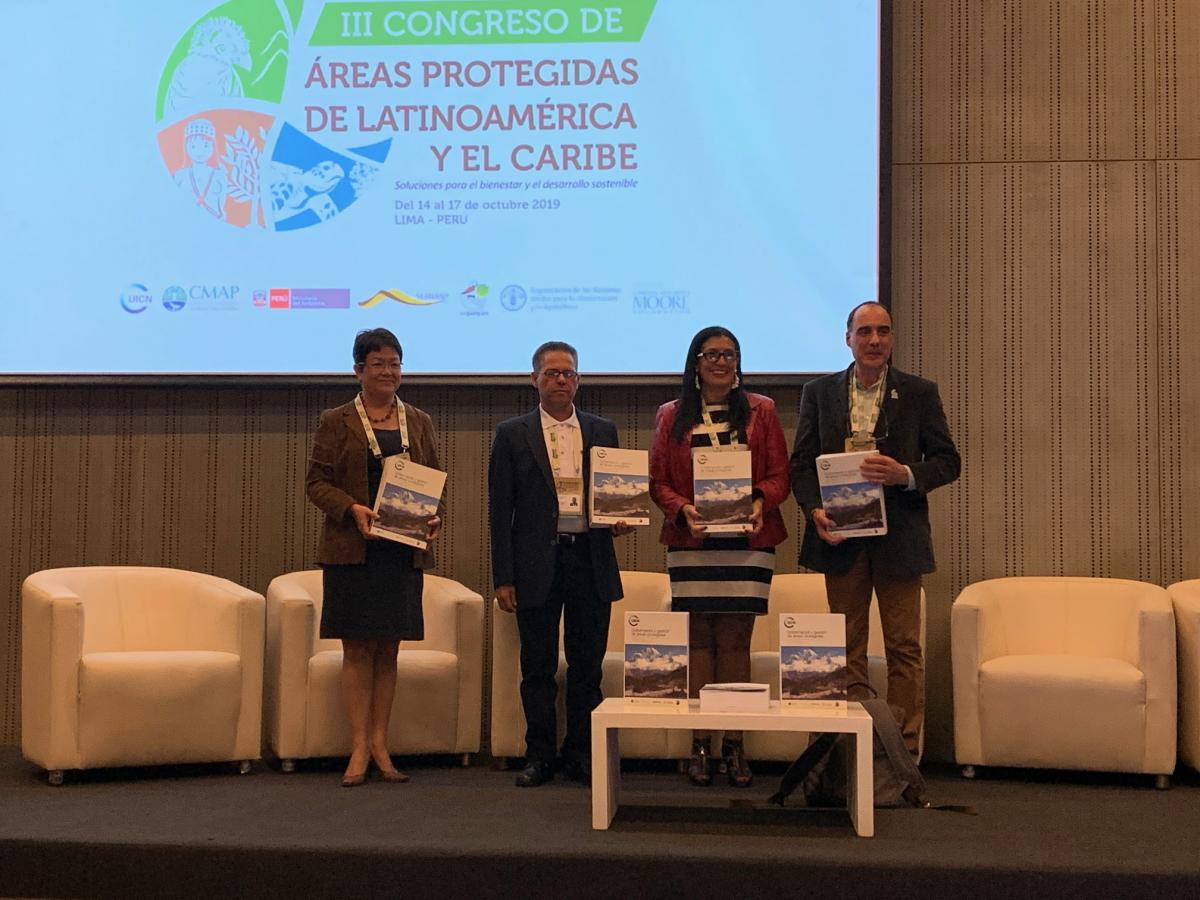INSEE contribution to sustainable development using Nature Based Solutions
A leading cement manufacturer in Sri Lanka Siam City Cement (Lanka) Ltd, also known as INSEE Cement Sri Lanka, launched its inaugural Sustainability Report 2018, which is also the Company’s first Global Reporting Initiative (GRI) based and externally assured Sustainability Report. The launch was held on 23 July 2019 at Taj Samudra Hotel in Colombo and marked an important milestone in INSEE’s ongoing journey of “Building the Nation”.

A copy of the Report being presented to Dr Ananda Mallawatantri, Country Representative of IUCN Sri Lanka Launch
Photo: INSEE
The launch of the report was followed by a panel discussion featuring seven eminent speakers including Dr Ananda Mallawatantri, Country Representative of IUCN Sri Lanka, who expanded on IUCN’s global and national level contributions to the Sustainable Development Goals.
IUCN Sri Lanka has more than a decade-long partnership with Siam City Cement (Lanka) Ltd (then Holcim Lanka), which was initiated in 2008. The partnership was for two main purposes: to rescue and release fauna and flora that are dislocated during mining processes and to advice the Company on restoration of mined pits with environmentally sound techniques.
The project focused on the Aruwakalu area where extraction of limestone for cement production takes place. The quarrying process involves the excavation, blasting and clearing of natural habitats, and thus impacting the biodiversity and ecology of the area. Many species become dislocated or threatened during this process as well.
In order to obtain baseline data, IUCN in 2008 conducted a biodiversity survey of the entire quarry site. IUCN then collaborated with the Company to rescue and release the species that were to be dislocated. Additionally, IUCN also provided advice on rehabilitating the mined areas with environmentally sound techniques. This was followed by monitoring of rehabilitated pits from 2009 to date.
Nearly 87 ha of mined areas have been restored from 2009 to 2018. The faunal species richness has increased from 52 to 249 species during the last 10-year period and with time, the shrub loving fauna disappeared while the forest loving species colonized the restored sites.
In addition to the replanted flora, natural forest dominant species such as “Weera”, “Thammanna” and “Palu” plants were also observed growing in the restored sites (seeds brought by the forest birds) indicating that the rehabilitated forest conditions have supported natural forest species to emerge within a short period of time (5-6 years).
The uniqueness of the Aruwakalu animal rescue mission is that it is a mass scale animal rescue mission conducted within a short time period. The first mission commenced in 2008 and IUCN has been able to incorporate this experience to National level species rescue missions (e.g. development projects such as the Moragahakanda, Kalu Ganga, Yan Oya, Upper Elahera and North Western Canal projects and the Aruwakalu Solid Waste Project). This has helped in conserving a number of endemic and threatened species for future generations.
Source: https://www.pressreader.com/



